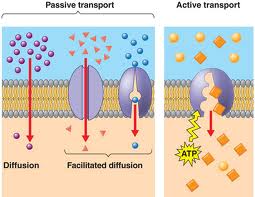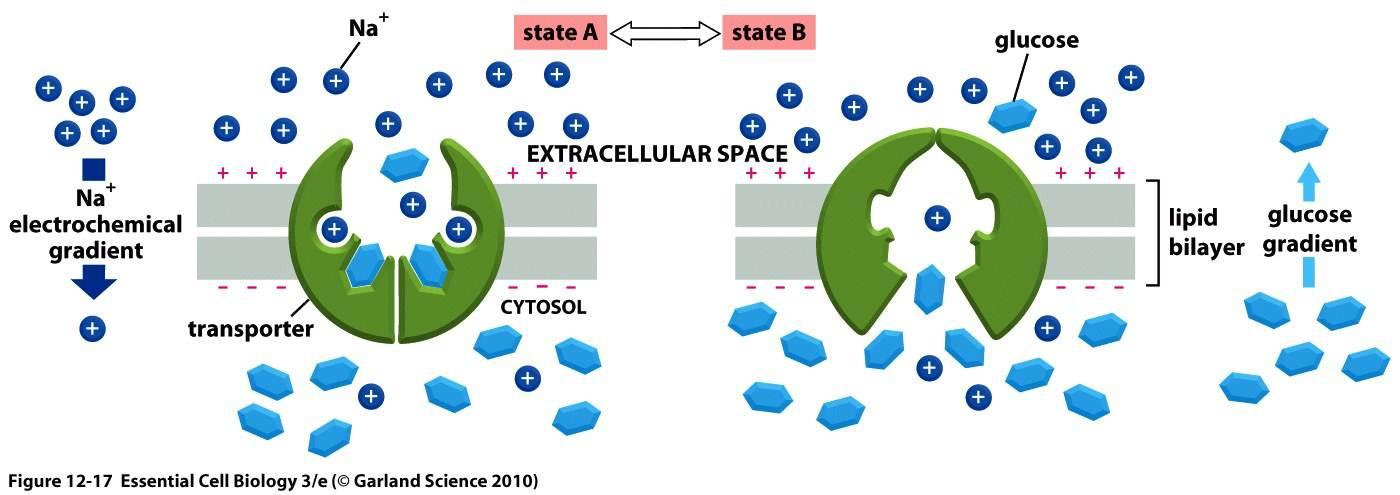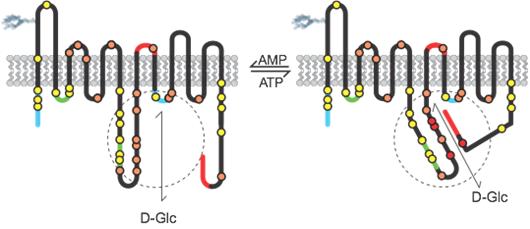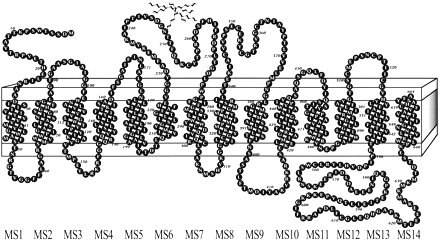| Hint | Food | 맛과향 | Diet | Health | 불량지식 | 자연과학 | My Book | 유튜브 | Frims | 원 료 | 제 품 | Update | Site |
|
인체 ≫ Control ≫ 신경전달, 호르몬 포도당 펌프 : Glucose transporter 인슈린 - Glucose trasnporter - 혈당 GI - 소식과 인슈린  1. Sodium-dependent glucose cotransporters (SGLT) 2. Facilitative glucose transporters (GLUT).  The GLUT family GLUT are integral membrane proteins which contain 12 membrane-spanning helices with both the amino and carboxyl termini exposed on the cytoplasmic side of the plasma membrane. GLUT proteins transport glucose and related hexoses according to a model of alternate conformation. Binding of glucose to one site provokes a conformational change associated with transport, and releases glucose to the other side of the membrane. The inner and outer glucose-binding sites are probably located in transmembrane segments 9, 10, 11.  The GLUT family contains 14 member with can be divided into 3 subfamilies: class I, II, III Class I contains : 1) GLUT1 : 뇌외 적혈구, 모든 세포의 호흡 유지에 필요한 최소한의 포도당 흡수 담당. 2) GLUT4 : express in adipocytes and muscle, insulin-regulated 3) GLUT3 : express in brain and testis, 뉴런에 많음, a high-affinity isoform 4) GLUT14 express in testis 5) GLUT2 express in liver, islet cells, kidney, small intestine, a high capacity and low affinity isoform Class II contains : 6) GLUT5 express in testis, intestine and muscle 7) GLUT7 express in testis, intestine and prostata 8) GLUT9 express in liver and kidney 9) GLUT11 express in pancreas, kidney, placenta and muscle Class II contains : 10) GLUT6 express in brain, spleen and peripheral leucocytes 11) GLUT8 express in testis, brain and adipocytes 12) GLUT10 express in liver and pancreas 13) GLUT12 express in heart, prostate and breast cancer 14) HMIT express in brain The SGLT family The SGLT family comprises Na+-dependent glucose co-transporters (SGLT1 and SGLT2), the glucose sensor SGLT3, the widely distributed inositol and multivitamin transporters SGLT4 and SGLT6,9 and the thyroid iodide transporter SGLT5. The sodium-dependent glucose transporters, also known as co-transporters or symporters, are integral membrane proteins (wich contains 14 membrane spanning α-helices with both the hydrophobic N-terminus and C-terminus facing the extracellular site)that mediate the transport of glucose and, with lower affinity, galactose across the plasma membrane by an active transport mechanism. This transport process is a cotransport of glucose molecules and sodium ions. •SGLT1 mainly in intestine, heart and kidney (proximal tubule of the nephron) •SGLT2 mainly in kidney (proximal tubule of the nephron) •SGLT3 in intestine, spleen, liver, kidney, muscle, cholinergic neurons of small intestine and in skeletral muscle st neuromuscular junctions SGLT1 and SGLT2 contribute to renal glucose reabsorption.   
|
||||
|
|
|||